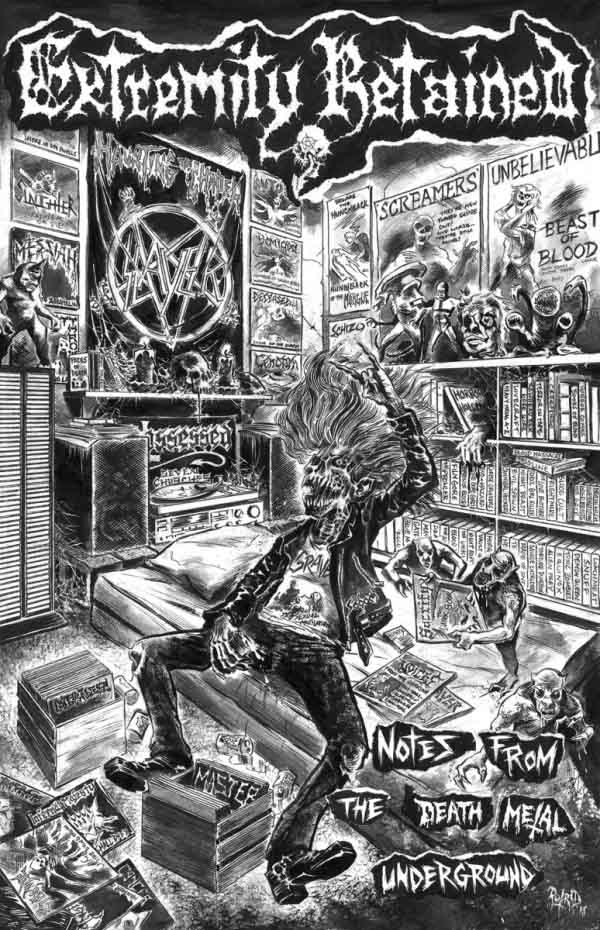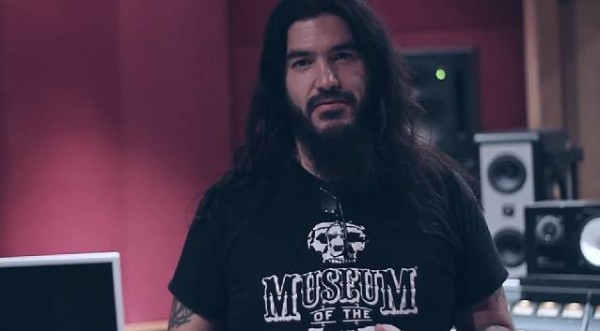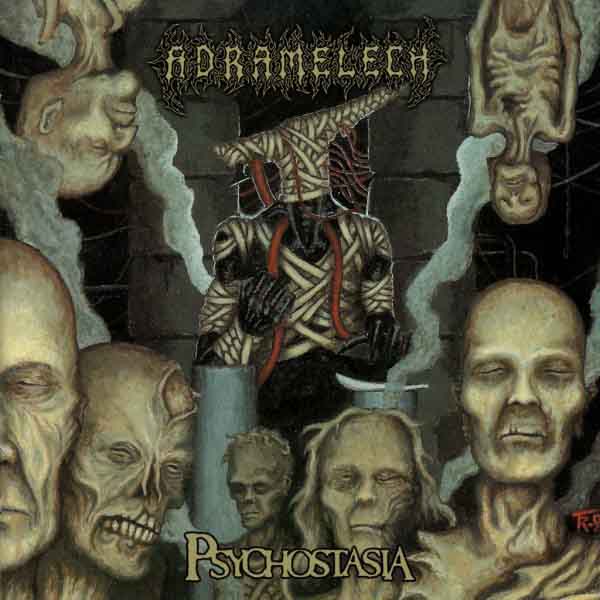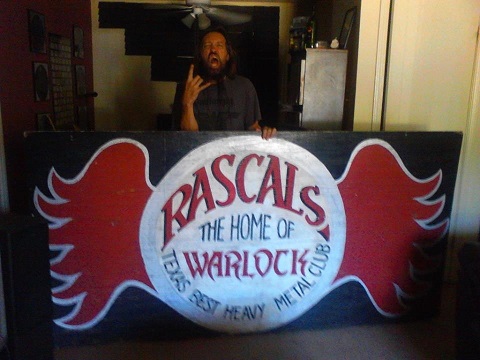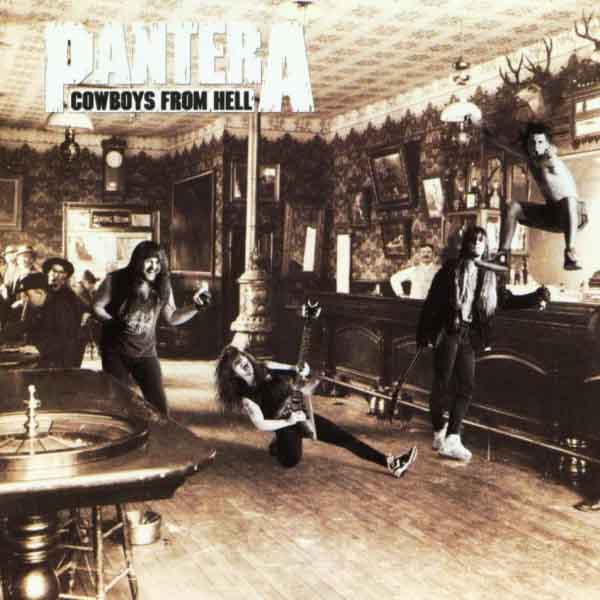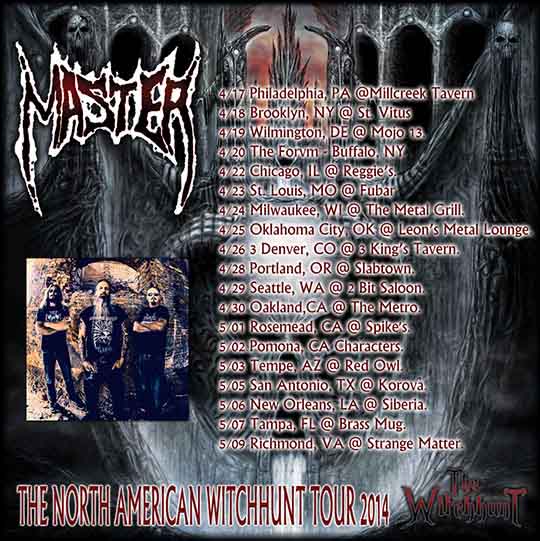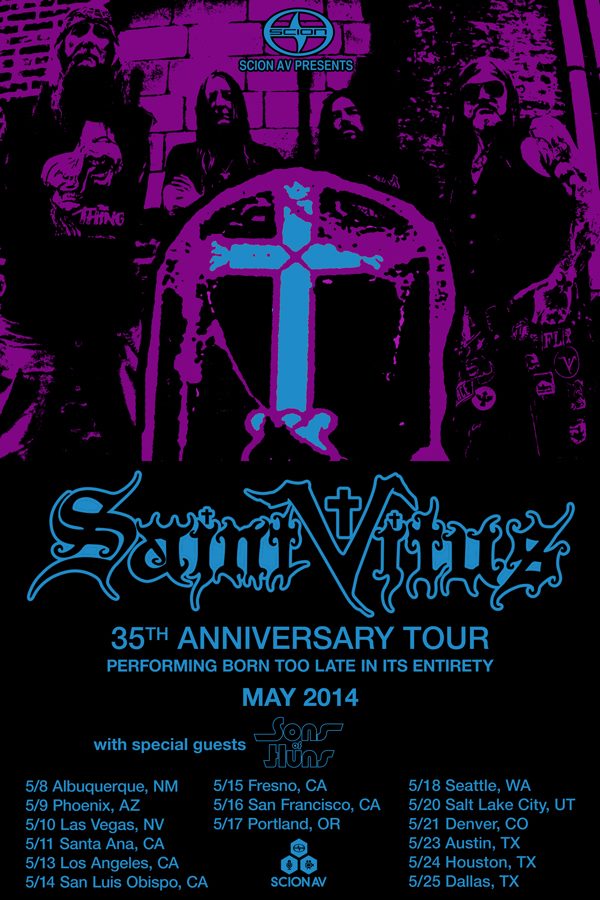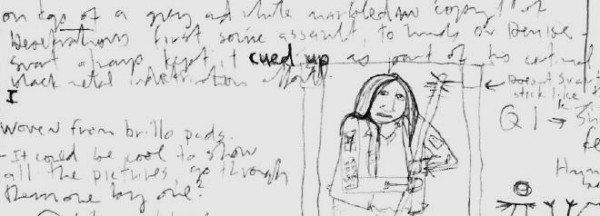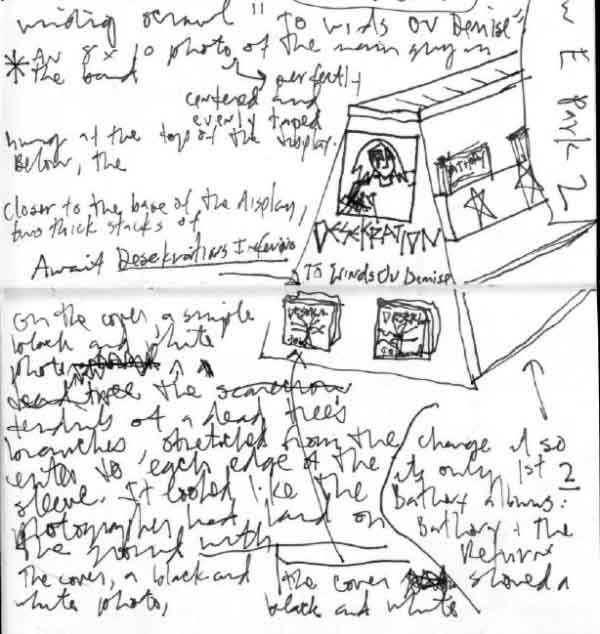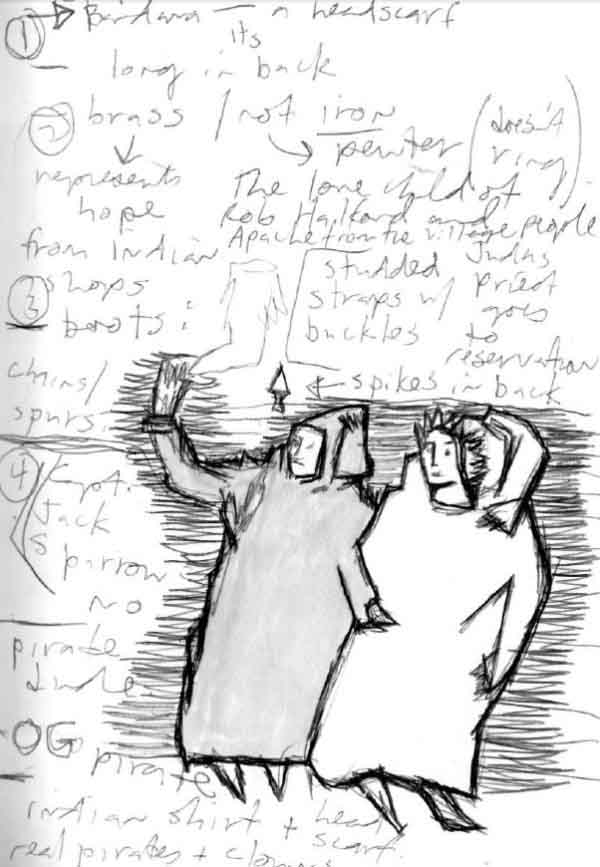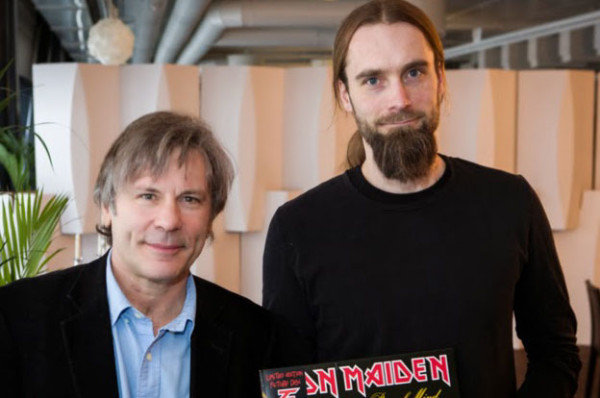As part of our exploration of academia in metal, we meet all sorts of interesting academics with different relationships to metal. Some are more on the academic side, some on the musical, and some in-between. Ross Hagen straddles both extremes by being both a musician and an academic with a focus on teaching metal. As a result, he brings both personal experience and delight in the genre to the otherwise more abstract academic view. We were lucky to get in a few questions with this interesting person and teacher.
You’ve got two degrees in music and one in musicology. What launched you along this direction? Did you intend to become an academic, or did the music lead you there?
I think this career path resulted from my love of music coupled with the fact that I didn’t really have the discipline for seriously practicing a musical instrument so I could play professionally. I’d much rather spend six hours a day in the library. Graduate school was also a nice way to extend my adolescence and avoid adult responsibilities for a few years after college. But when I think about it, I suppose that academia was always an intention of mine, whether I thought about it consciously or not. Both of my parents were educators, so I guess I’m something of a poster child for following the path laid out by my upbringing.
What got you involved with heavy metal? Were you a fan before you studied it? What appeals about it to you, both as a research subject and as a personal listening experience?
I was definitely a fan before I began pursuing it as a topic of study. My father was a college professor and his students would occasionally loan him tapes and CDs so I was listening to a lot of college rock and industrial music (well, NIN anyway) in my early teens. At one point he had a student who loaned him some of the early albums by Amorphis, Samael, Tiamat, and My Dying Bride and I dug them a lot. It wasn’t until college that I found other people who liked that kind of stuff and expanded my listening though. I feel like I’m still playing catch-up on a lot of older material from the 70s and 80s especially. I also got into musicology as an undergraduate and began including metal in my studies there.
From a personal standpoint, I suppose I find it empowering in some respects, but I also like that black metal especially is a style where it’s easy to just get lost in the sound. As a bassist and composer I like that metal is challenging to perform and that it’s a style that is quite malleable in some respects even as its fundamental ingredients remain relatively stable. I think that’s part of what I like about it as a researcher as well; the tension between the metal’s core attributes and its desire to evolve and change.
You’ve contributed a piece, “Musical Style, Ideology, and Mythology in Norwegian Black Metal,” in the compilation Metal Rules the Globe. Can you tell us about this writing, and what your thesis generally was?
This was a version of my 2005 Master’s degree thesis where I wrote about some of the key elements of the “second wave” black metal musical style and related them to the genre’s interest in the supernatural and mythical. In particular I looked into the way that blast beats and tremolo picking seem to suspend rhythmic momentum and time in black metal when coupled with more slowly changing harmonies and hazy-sounding production.
I also related the use of full chord voicings and the use of parallel minor 3rds and 6ths (in Emperor’s music especially) to an interest in chaotic sorts of sounds since those types of chords are much less focused and resonant than the typical metal power chord when played with lots of distortion. I considered these musical conventions as evocations of trance experiences because they create a sense of stasis and timelessness (in a literal sense) by obscuring rhythmic propulsion and harmonic clarity.
I was at the time interested in connecting these musical devices to the sort of Norse revivalist rhetoric that was regularly coming from people like Varg Vikernes and that also underpins Michael Moynihan’s Lords of Chaos, especially mythical figures like the berserker…that black metal seems to reward an ideal of virtuosity based on physical endurance rather than dexterity and nimbleness, things like that. I do think that there was a certain aesthetic affinity with these mythical ideals for some black metallers, that they envisioned themselves as warriors or as part of a charivari tradition trying to bring back a romanticized ideal of pre-modern Europe. However, I think that the chapter’s main contribution is the articulation of the musical style…or at least when I go back and read it those are the parts that I think hold up the best.
You teach courses on popular music, music appreciation, and music history at Utah Valley University. Does this include metal? How do students respond to it? Does their response change depending on whether they are metalheads or not?
Most of them seem to respond fairly positively to it when I do teach it, which usually only happens in the course specifically centered around popular music. I do include bits of Eddie Van Halen and Yngwie Malmsteen in my schtick on musical virtuosity in the music appreciation classes, but more as a side comparison. Students in the popular music courses seem to respond well to it even if they aren’t fans, since by the time we get into it most of the students understand that “liking” a genre of music is not a prerequisite for investigating its musical style and influence. Metalheads or former metalheads (I actually hear that a lot here…metal is something they used to like as teenagers) tend get a little more into it, but I’m often pleasantly surprised as well when students who have no personal affinity with the style offer thoughtful considerations of it.
I find it interesting that you’ve composed music for the production of two ancient Greek plays at UVU. Are these going to be released? Is there any overlap between ancient Greco-Roman music and heavy metal?
Actually only one of them (Antigone) was an ancient Greek play. The other one, Eurydice, was a modern play by Sarah Ruhl that is built around the myth but definitely takes its own path (and was directed by my very talented and lovely wife Lisa). Oddly enough, my music cues for Eurydice actually did include a bit of Rammstein-ish heavy metal…the script called for it when the Lord of the Underworld enters dressed like a child and riding a tricycle.
I’m not planning to release recordings of Eurydice‘s music cues themselves since they wouldn’t make a whole lot of sense on their own (15 seconds of heavy metal, 45 seconds of lounge music, etc.) but I did put together a suite of sorts called gravity is very compelling out of the soundscapes from Eurydice. The Antigone score is likewise kind of boring out of context, but I’ve repurposed parts of it in other works here and there.
Regarding ancient Greek and Roman music, I can say with some certainty (even though ancient music isn’t a specialty of mine) that there’s not any overlap with heavy metal in terms of musical content. A lot of the theoretical ideas and writings helped lay the foundations for the European art music tradition in the medieval period, though. Plato’s famous concerns about the dangerous moral and social effects of “disordered” music also echo through the centuries to inform the various moral panics around heavy metal and other musical styles.
According to your biography, you’ve participated in more than a dozen album releases on various American and European labels, and perform in the ambient bands encomiast and Schrei aus Stein as well as two local metal bands. Can you tell us a bit about your musical history?
I started making ambient music with encomiast in the late 1990s, when I had access to a proper electronic music studio at college. That sort of whetted my appetite for it and I’ve continued recording stuff like it ever since, often drawing my friends into the mix as well. Most of the catalog from that project is available at encomiast.bandcamp.com, although I think my favorite is the 139 Nevada 2xCD that grew out of an attempt to record ghostly voices at a haunted theater. I started Schrei aus Stein when I wanted to do something that mixed drones and noise with more of a black metal aesthetic. Beyond those projects, in the last decade I’ve played in the absurdist metal duo Spawn of the Matriarch, the stoner metal band Governors, a krautrock/free jazz trio, a one-off Mortician-worship solo project named Immensite, and a couple of cover bands.
Currently I play bass in Burn Your World, a band that mixes extreme metal styles with some hardcore punk influence. We also have a side project called Curseworship in which I play bass and compose a lot of harsh noise and analog synth freakouts. Both of those bands have recordings coming out soonish.
What do you think is the role of music? Is it to communicate ideas, express emotions, or make an aesthetic object for others to appreciate? Or none of the above?
I’d probably say it’s more like all of the above in my view, depending on the context and the person who is experiencing it. Your last role (aesthetic object) is probably closest to the way I think about the music I create — I tend to think structurally rather than in emotional or rhetorical terms.
Do you think metal is a subject that should be taught in schools? There’s two viewpoints to this: from academia’s point of view, and from metal’s point of view.
I think that from an academic point of view it’s as valid a subject as any, and to my mind it provides a rich musical and cultural well for all sorts of areas of study. I’d also be lying if I denied that it gives me a lot of pleasure to teach and write about music I love, so there’s a selfish end too I guess! I certainly also understand why some metalheads might not appreciate it because sometimes it does seem like once something has the stamp of approval from the ivory tower it loses a lot of its countercultural credentials.
Some might see it (possibly correctly!) as a misguided attempt to validate metal as an art form…or perhaps to validate academia by borrowing some of metal’s coolness. I personally try to avoid giving that impression in my classes, but my position as an academic may make it impossible for me dodge those bullets entirely. So I suppose my ultimate answer is “yes,” but with acknowledgement of some pitfalls.
You taught a couple of metal-centric classes at CU-Boulder while you were finishing your degree. What were these like? How did you “teach metal”?
One of them was a single Saturday course done through Continuing Education that was sort of a quick trip through some various issues (musical style, censorship, etc.). The longer course was a version of a course on Rock Music that I team-taught with Joel Burcham. In that one my idea was to use metal as a way to explore various aspects of popular music, including recording, performance, fandom, authenticity, etc. My goal was less to teach metal and more to allow metal to teach us, if that makes sense.
You’re an ethnomusicologist; those seem like a cross between music historian and music analyst. How does understanding metal at a musical level help you understand it at a culture level? Are there correlations between the two dimensions of metal?
I sometimes feel like the primary thing my musical training provides me with is a vocabulary with which to work. I do find it helpful in terms of articulating aspects of metal music and production that encourage particular responses and experiences among listeners. As I mentioned in my summary of the “Metal Rules the Globe” article, I do think that some musical ideas can evoke particular experiences and reflect certain values. I would stop short of saying that they necessarily correspond to the values of the performer and the audience though. Sometimes that might certainly be the case, but I’ve come to be skeptical of sweeping correlations, mostly because I want to avoid misrepresenting the culture of metal as a monolithic entity. The more time I spend with metal and with other metalheads, the more I appreciate the diversity of experience within it.
One of your research interests is ritualism. Are there ritual aspects to heavy metal, especially the black metal variety?
I tend to think that almost every musical activity has some sort of a ritual component to it, using the term broadly. With black metal, though, I’m particularly interested in the deployment of Ritual “with a capital R” as a conscious effort to connect the music and performance with some archaic imagined past. In some respects, I think the past black metal invokes is the past of black metal itself, a retro recycling and recreation that is common to all music in some degree, but which has perhaps increased lately (Simon Reynold’s recent book deals with this better than I).
Invoking ritual also feels like an appeal to an authoritative kind of authenticity, an assertion that black metal is not entertainment or theater, but instead that it is a stable and “timeless” tradition and (importantly) not beholden to the vagaries of taste or fashion. The use of a fairly standard and narrow set of musical gestures and sounds, deindividualizing costumes and pseudonyms, and staged evocations of sacrificial death all work to this end. Of course, the “appeal to ritual” is also in some ways merely a marketing term and a performance conceit. It might go hand-in-hand with the increased visibility of black metal over the past decade or so.
I’m currently working with these ideas as part of a research project on musical ritualism as an authenticating tactic in popular music…possibly with a parallel trajectory in musical representations of monstrosity and supernatural forces. I’m still gathering my dogs together to see if they hunt though.
How important do you think heavy metal is as a cultural indicator? What does it tell us about our society?
I think it certainly has a role there, although I think that what it says varies a lot depending on who is involved in it. Actually, I think that if we look at metal around the globe, I might consider a lack of metal in a society to be more significant. It seems to be an almost ubiquitous presence, even under circumstances of war and deprivation.
I do think that the value so much metal discourse seems to place on trueness and authenticity is perhaps symptomatic of a larger sense of uprootedness in (American?) society. Rather than celebrating the protean side of 21st century identity, metal seems to demand a higher level of “identity essentialism” in that respect. It promises some measure of stability.
In your view, why is metal such a distinctive genre, with such strong rules and boundaries (trueness, cultness)?
It seems that being embattled or marginalized is an integral part of the way metal views itself, even if in some cases we might consider that metalheads doth protest too much. This sense of being outside the mainstream probably creates this sense of cohesion and belonging, as well as a bit of suspicion and distrust of outsiders and “un-metal” musical influences.
I think that the boundaries have actually gotten more stringent over the past decade or so in underground metal, although it’s probably more likely that I’ve just become more aware of them. I might suggest that as the artifacts and symbols of insider-ness in metal have become more readily available, the concern with maintaining boundaries has risen accordingly. As it becomes easier and easier to amass knowledge about the most obscure bands, along with their recordings, that obscurity loses its power.
Patch jackets don’t seem to carry the same weight if you can purchase a whole collection of rare kvlt “merit badges” in 20 minutes on eBay. This situation makes metal’s system of cultural signifiers less trustworthy in terms of judging someone’s commitment to the genre, so it seems like the boundaries need more strict enforcement. It’s only exacerbated in cyberspace. But of course the best way to be kvlt is to deny that it matters if you’re kvlt or not…it’s square to be hip, right?
You’re on the editorial board of the journal Metal Music Studies. How has metal in academia expanded during the time you’ve been observing, and where do you see it going in the future?
To be totally accurate, I’m actually just on the editorial advisory board, which just means I’ll be on-call as a peer reviewer once we’re totally underway. I hope to continue my involvement in the future, however.
When I first began writing about heavy metal as a graduate student in the early/mid 2000s, it seemed that there was precious little academic writing about metal beyond Walser, Weinstein, and sociological studies beating the dead horse connecting metal and crime/delinquency. Over the following decade it’s just blossomed as a field of study, and I think it’s impressively diverse. I mean, we’ve got people from sociology, ethnomusicology, historical musicology, fan studies, philosophy, and interested practitioners all in the mix. I’ve been trying (and failing) to keep up with all the publications. It’s an exciting and inspiring field.
I think that we’re going to see more studies that question the conceptions of locality and place in metal, since the increasing digital networks around the world are making physical geography less relevant in some respects. I know some scholars are working on the exoticism in metal, which seems especially interesting because it binds together questions of intent (patriotism? parody?) with issues of reception. It also seems that Metal Studies has focused a lot on the more extreme and underground subgenres, so I hope we might see more people begin to explore the intersections between metal and mainstream pop culture, both currently and in the past.
3 CommentsTags: academia, Heavy Metal, metal academia, ross hagen

